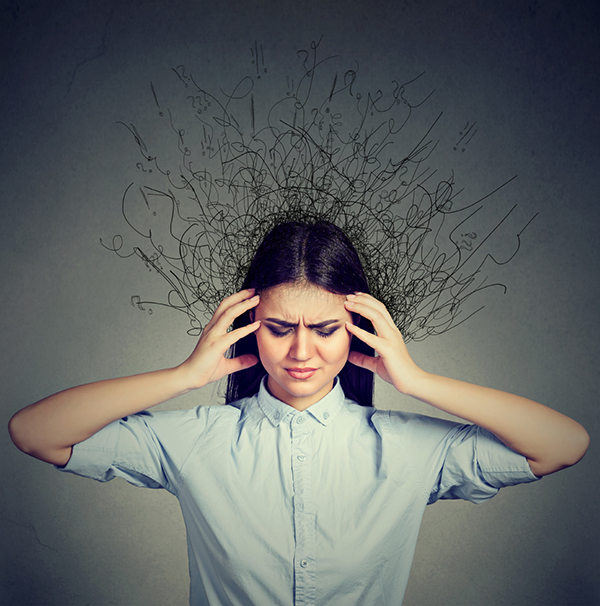Staying in the Pink of Health

Since the 16th century, ‘in the pink’ has been used to describe being at the peak of something. It was an idiom to express fashion excellence before it found its way into its current usage in the 20th century in the form of the ‘pink of health’. The phrase was fitting, having grown in popularity as people saw rosy complexion as healthiness. How has the idiom evolved and what does it mean when it comes to health today.
WHAT IT STANDS FOR
Used in greetings and blessings, the idiom ‘in the pink of health’ is often uttered with the meaning of good health and wellbeing. However, through overuse over the ebb and flow of time, its intended meaning is now entirely lost in translation.
According to the World Health Organisation, the definition of good health is a ‘state of complete physical, mental and social wellbeing’, free for the person to live life to the fullest and pursue what it has to offer. To qualify in the modern age, an individual in the pink of health is one who scores high in the four dimensions of wellness: physical, emotional, mental and social wellness. To neglect any dimension will hurt a person’s ability to live life to the fullest.
A decline in physical wellness will restrict an active lifestyle; a drop in emotional wellness puts a toll on the body, impairing the immune system and raising blood pressure; a fall in mental wellness will interfere with daily functions, and a decrease in social wellness leads to isolation and feeling of loneliness. If any is neglected, it will affect, interact and integrate with each other and can precipitate adverse changes in both mind and body.
This is an evolution of the definition of health and medical practice from the time where medical care was focused on the absence of physical illnesses. And mental, emotional and social healthcare did not truly exist, characterised only by harsh, ineffective treatments like electrical therapies and controversial surgeries. The pink of health, as a catch-all phrase for good health, should capture this evolution and embody the four dimensions of wellness.
HOW IT APPLIES TO SINGAPORE
Just as the meaning has adapted to incorporate a fuller view of wellbeing, staying in the pink of health is different now and how it was used in the past. A publication of University of Oxford, Our World in Data has shown life expectancy has gone from an average of 30 in the pre-modern world to about 70 years old now, due to better education and advancement in medical technology and science.
In particular, problems of the past such as high child mortality rate are no longer at the top of our minds. Dangerous illnesses like bacterial pneumonia that once ran rampant in the old world were not as feared in Singapore. But with technology comes a new layer of wellness challenges, as the world becomes increasingly connected and automated.
The need to stay competitive and relevant exceeds the need for health. As The Straits Times article ‘More Young Professionals Suffering from Burn-out’ suggests, many in competitive careers like investment banking, are working over 70 hours a week, driven by a need to prove themselves. They miss out on sleep, eat fast food on the move and neglect time with loved ones, eventually developing insomnia, depression and hypertension, among others.
Singaporeans are not the only ones facing the wellness challenges. A 2015 survey by the Humanitarian Organisation for Migration Economics (HOME) has shown 24% of domestic workers in Singapore suffer from poor mental health, characterised by emotional outbursts, low mood and self-esteem. In Singapore’s pressure-cooker environment, many more risk segments remain hidden and untreated.
In today’s context, the pink of health has become an aspiration, rather than an integrated part of our day-to-day life. And it is a problem shared by both Singaporeans and foreigners.
HOW IT CAN BE ACHIEVED
Staying healthy is not rocket science; it is a goal within reach, even for those who lead busy lifestyles. It is lifestyle relevant to all, from the toddler in the house to the silver-haired elderly looking for meaning after retirement. This is the belief you need to understand and accept before you can achieve the dimensions of wellness. Many do not take care of their health until problems start to manifest.
Staying healthy is part preventive, part detective, part corrective and part supportive. When you are at the peak of health, you take care of it. When you feel something is off, you seek diagnosis. When you need treatment, you follow the regimen till recovery. And when you are in need, you gather support, be it emotional or social.
Staying healthy is about forming exercise habits. Even the super busy who find it hard to break the productivity stride to work out for an hour, will be able to integrate a healthy lifestyle if they break it into many little habits. Office exercises that you can do while seated or by your booth are gaining in popularity. Add in knee lifts, body stretches and chair-dips every hour to keep your, body active then pump up the action over the weekend.
Staying healthy is a lot about nutrition and diet. The adage ‘you are what you eat’ holds true to this day. Always go for the real deals: Skip store-bought varieties for freshly squeezed fruit juices, and opt for protein-rich meals instead of packaged goods that will keep you full for a longer period of time. Add spices and vegetables to everything you eat, when possible, and stick to simple creations so you will not procrastinate on whipping up something healthy for yourself.
Staying healthy is fuelled by mindful living. As you engage in daily firefighting or worry about the future, you forget to appreciate the environment you are in and notice the beauty of life. Mindful living is about doing just that, maintaining a moment-by-moment appreciation of everything good you have now. To do so, you can incorporate a five-minute meditation before sleep to help you wind down and think through the day.
Staying healthy is never neglecting your loved ones and friends for work. While you need to build your career and achieve financial stability, joy and satisfaction in life is sustained more by frequent family reunions and outings with friends than by hitting the next key performance indicator. In the end, when you retire, only your loved ones will stay by your side.
PINK OF HEALTH IS MORE THAN JUST WELL WISHES
The idiom should be more than just an expression of well wishes to friends and loved ones, but an advocacy for actions towards healthy living. You can go beyond just paying lip service to someone as being in the pink of health by integrating a healthy lifestyle into both your lives by forming a weekend running routine together. When you have a young child, you educate him or her from young about the importance of healthy, mindful living.
Just as the dimensions of wellness interact with each other in synergy, you too, can engage with your loved ones and help one another achieve the pink of health. Don’t just pay lip service. Turn it into an activity for your long term health.
This article is taken from our My Alvernia Magazine Issue #29. Click here to read the issue on our website or on Magzter.



